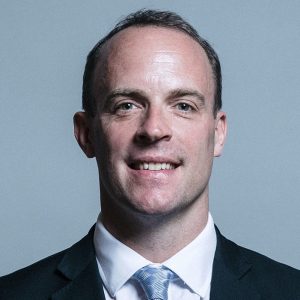Dominic Raab ousts Sharma as new Housing Minister
Dominic Raab MP has today been confirmed as the new Minister for Housing. An up-and-coming MP who was part of the 2010 intake, Raab is thought of as veering towards the right wing of the party, and will be a controversial choice for some in the housing and planning sector due to his tough views on  immigration.
immigration.
Raab becomes the 16th housing minister in just 20 years, and will work with the newly re-appointed Secretary of State Sajid Javid to keep Housing at the top of the Government’s agenda.
Leaving his post as Minister of State at the Ministry of Justice, Raab will immediately take over the mantle of delivering a housing agenda to deliver 1 million homes by the end of 2020, and a further half a million more by the end of 2022.
Safe as houses?
Raab, 43, is highly regarded within the Conservative Party and has been an MP for seven years, having had an earlier career as a solicitor. Elected as the Conservative MP for Esher and Walton in May 2010, he has previously worked as a lawyer and at the Foreign and Commonwealth office.
With a whopping 50% majority of just less than 30,000 votes Raab is in absolutely no danger of being displaced via an election loss any time soon, as former Housing Minister Gavin Barwell was.
Raab will arrive at his office at the Ministry of Housing, Communities and Local Government (MHCLG) this afternoon to find a pile of urgent papers awaiting his decision, including: the Social Housing Green Paper, the completion of the overdue NPPF reforms, the Letwin Review of land banking, and the findings of the Grenfell Tower inquiry.
The NPPF and Letwin reviews are both significant pieces of work that will require Raab to quickly get up to speed with England’s complex planning laws. The findings of the Letwin review are due by the Spring statement on 13th March, and the NPPF has been touted for a March launch by civil servants.
Raab’s appointment may come as something of a blow to the development sector, as Raab has been staunch in his opposition of building anything on the Green Belt. In February last year, Raab wrote to Elmbridge Borough Council stressing that “every effort must be made to avoid building on green belt” in the Council’s plans to meet housing need in the area.
Raab has also previously nailed his colours to the mast on immigration, stating in 2010 that “tides of inward population movement” in the South East have increased the “local pressures on housing” and that “there are more people, and finite resources”. In a 2009 blog post, he also seemed to set out his view that the ‘first’ cause of the housing crisis was ‘open door immigration’.
Sajid’s stance has consistently been to deny that the housing crisis is down in any part to mass immigration. If Raab can make his presence felt at MHCLG, we can expect to see the Government’s rhetoric around immigration and housing shift in coming weeks.
Sharma shuffled out of the deck
After a torrid six-month stretch that was mostly been spent reacting to the Grenfell crisis, Sharma will now take up a role as Minister of State for Employment at the Department for Work and Pensions.
The move will come as an unwanted demotion for Sharma, who has relished playing a more senior role and will not jump at the junior position on the same footing as his housing role.
Ministry for HCLG
The Prime Minister’s ‘personal commitment’ to ensure housing is the Government’s key priority has led her to rebrand the Department of Communities and Local Government as the ‘Ministry of Housing, Communities and Local Government’. Sajid Javid says that the change reflects how much importance is being put on housing within Government, saying: “Building the homes our country needs is an absolute priority for this government and so I’m delighted the Prime Minister has asked me to serve in this role. The name change for the department reflects this government’s renewed focus to deliver more homes and build strong communities across England.”
